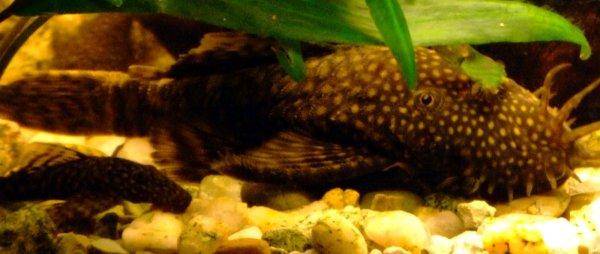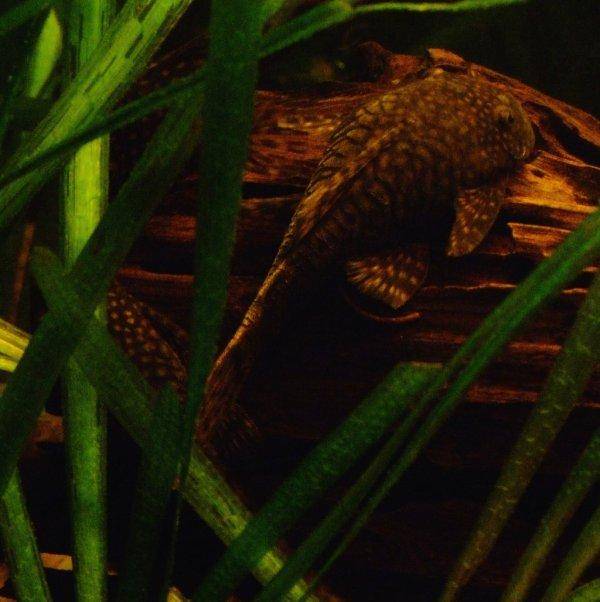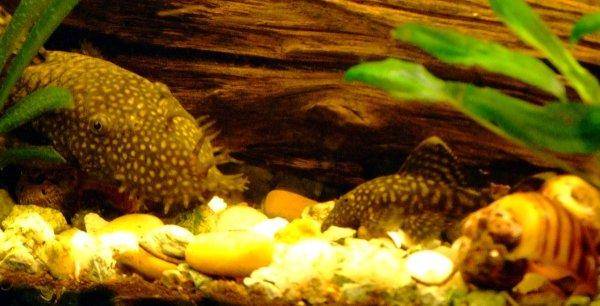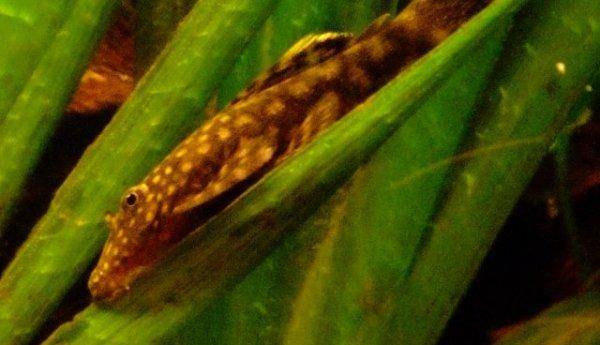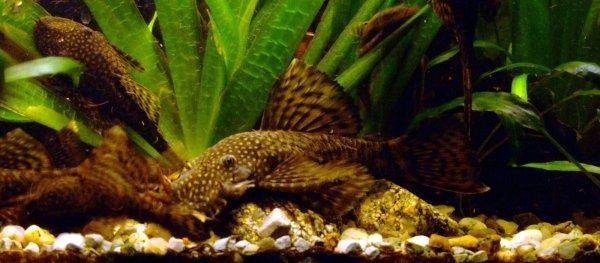Comprehensive Guide to Caring for Bristlenose Catfish: Care, Breeding, and Diet
Quick links - Topics Covered
Brief Description
Welcome, Bristlenose catfish enthusiasts! This guide covers everything you need to know about caring for these fascinating fish — from raising and breeding them to answering frequently asked questions, sharing pictures, and much more.
We’d love to hear your stories! After reading, feel free to leave a message at the bottom of the page and share your own experiences with Bristlenose catfish.
Looking for details on a specific species? We also invite you to explore these related profiles:
- Ancistrus cirrhosus – Bristlenose Catfish Profile
- Ancistrus sp. – Bristlenose Catfish Profile
- Ancistrus claro – Gold Marble Bristlenose Catfish
- Ancistrus dolichopterus – Bushymouth Catfish
These are all commonly referred to as Bristlenose catfish, so if you’re researching one of them — you’re in the right place. And if you still have questions, don't hesitate to ask using the form below. We’re here to help!
Bristlenose catfish are among the most common and most popular tropical freshwater fish found in pet stores. They're often recognized as “those dark fish that stick to the glass and bottom of the tank.”
While an albino variety exists, most specimens display dark coloration and a distinctive “mustache” of bristles around the snout — particularly in males.
These catfish remain relatively small, typically reaching an adult size of 10–13 cm (4–5 inches), which makes them a suitable addition to many community aquariums.
They are widely appreciated by aquarists for their hardy nature, algae-eating habits, and peaceful behavior.
Basic Requirements and Introduction
Bristlenose catfish are not demanding when it comes to space, as they spend most of their time resting on the bottom of the tank or on large plant leaves. Adult specimens typically grow to around 13 cm (approximately 5 inches), with females being slightly smaller than males.
These fish are social by nature and thrive in groups. A tank with a base of 50 × 50 cm (20 × 20 inches) can comfortably house up to 15 individuals, making them suitable even for many beginner aquariums.
Juvenile Bristlenose catfish cannot be sexed reliably. Once mature, males can be identified by their prominent bristles ("mustache"), larger size, and more intense coloration.
If provided with suitable spawning sites—such as flat stones, caves, or pipes surrounded by plants—these catfish will breed readily, much like guppies.
However, it is important to avoid housing them with other bottom dwellers, such as loaches, in a breeding tank. These species may prey on the eggs or fry.
A larger, dedicated breeding tank is highly recommended. Under the right conditions, Bristlenose catfish can reproduce continuously, with fry appearing month after month. Watching young fish clinging to rocks, caves, or the glass is a rewarding sight.
Although some aquarists believe breeding Bristlenose catfish is difficult, it is actually quite straightforward when the tank is properly set up. Once successful, the population of Ancistrus can increase steadily over time.
This article was originally created as a brief care guide for Bristlenose catfish. Over time, it has been expanded to include key topics such as water chemistry and temperature management — both essential for maintaining healthy and active fish.
Unfortunately, misleading advice is common. Pet store employees and online sources often repeat outdated or oversimplified information, which can result in confusion or even harm to fish.
To provide clarity, this guide includes detailed and reliable information based on real-world experience. Special attention is given to factors such as water hardness, temperature, pH levels, carbonate hardness (KH), and water flow — all of which play a critical role in Bristlenose catfish care and breeding success.
What Type of Aquarium Is Best for Bristlenose Catfish?
Bristlenose catfish are shy, bottom-dwelling fish that require plenty of hiding places to feel secure — especially during daylight hours when they are least active. Being nocturnal, they tend to come out primarily at night or during feeding times.
Aquarium décor should include a variety of shelters, which are also essential for the protection of fry (newborns). Ideal hiding spots include rocks, caves, driftwood, and live plants such as Anubias nana and Java moss. These features provide both cover and grazing surfaces, which Bristlenose catfish enjoy.
When housed with larger or more territorial fish species — such as Acaras, Angelfish, or Gouramis — having adequate shelter becomes even more important. These species may become aggressive, especially toward small or newly hatched Bristlenose catfish.
Without enough hiding spots, fry are particularly vulnerable to predation, even from otherwise peaceful tankmates. Providing a well-structured aquascape helps ensure their survival.
Whether the aquarium is tall or shallow makes little difference for Bristlenose catfish. What truly matters is proper aeration. These fish rely on well-oxygenated water to stay healthy.
If oxygen levels become too low, Bristlenose catfish may swim to the surface to breathe. This behavior is possible because they possess a primitive lung that allows them to absorb atmospheric air.
However, surfacing can be dangerous for smaller specimens, especially in community tanks with predatory species. Once fry reach about 2 cm (0.79 inches) in length, they are less likely to be eaten by other fish.
What’s the Ideal Aquarium Temperature?
Bristlenose catfish can tolerate water temperatures as low as 18 °C (64 °F), but it is not recommended to keep them below 21 °C (70 °F). For optimal health and activity, the ideal temperature range is between 22–25 °C (71–77 °F).
Seasonal fluctuations are natural. In summer, water temperatures may exceed 28 °C (82 °F), which is still acceptable for this species. However, as water temperature rises, oxygen levels decrease. Therefore, increased aeration using a filter or air pump becomes essential during warmer months.
Without sufficient oxygen, Bristlenose catfish may start surfacing for air, which is a sign that the water conditions need to be improved.
What Do Bristlenose Catfish Eat?
Bristlenose catfish are bottom feeders that thrive on a varied diet. They readily accept sinking foods such as SERA tablets (available in meat- and vegetable-based varieties), as well as live or frozen options like mosquito larvae, worms, insects, daphnia, and brine shrimp.
Although live or frozen food tends to encourage more consistent breeding, these catfish can still reproduce well on a balanced diet of high-quality commercial foods. Providing a mix of protein- and plant-based nutrition ensures they receive the essential vitamins and minerals they need to stay healthy and resilient against disease.
Bristlenose catfish are not picky eaters. They will consume food that sinks to the bottom, including uneaten flakes and even decaying organic matter. However, regular treats such as mosquito larvae and worms — whether live or frozen — add much-needed variety to their diet.
Overfeeding should be avoided, as it can lead to serious health issues. Interestingly, these fish are also known to enjoy vegetables. A small slice of carrot, for example, is often eagerly consumed and provides valuable nutrients to support growth and overall vitality.
Water Hardness, pH, and Other Considerations
Maintaining the correct pH is especially important for the health and survival of newly hatched Bristlenose catfish. While adult fish are generally tolerant of a wider range, fry thrive best in slightly acidic water with a pH around 6.5. The recommended temperature range for healthy growth and breeding is 22–28 °C (71–82 °F).
General water hardness (dGH) is less critical but should be kept within a stable range — ideally no lower than 4° and no higher than 24–25° (71.43–446.43 ppm). When the water is properly mineralized, weekly water changes are not strictly necessary.
For aquarists who are not experienced in mineralizing aquarium water manually, regular partial water changes are still the simplest and most effective way to maintain a healthy environment for fish and plants alike.
For successful breeding of Bristlenose catfish, the water should be either neutral or slightly acidic. A pH between 6.5 and 7 is considered ideal. Equally important is monitoring carbonate hardness (KH), which should be maintained at 4 °dKH or higher to support fry survival and stabilize pH levels.
If carbonate hardness drops below 4, pH levels may fluctuate dramatically — from around 7 in the morning to as low as 5.5 in the evening — which can be harmful to both adults and fry.
To stabilize KH, one teaspoon of sodium bicarbonate can be added per 100 liters of water (26.42 US gallons or 22.00 Imperial gallons). After dosing, KH should be tested again. If it is still below 4, the process can be repeated until the desired stability is achieved.
How Many Bristlenose Catfish Can Be Kept Together?
The appropriate number of Bristlenose catfish in an aquarium depends on the mix of sexes and the available space. Males are naturally more territorial, but with time and proper tank setup, they can learn to tolerate one another — especially if each has access to a personal hiding spot.
As a general guideline, each Bristlenose catfish should be allocated at least 10 square centimeters (1.55 square inches) of tank space. Providing plenty of hiding places and bogwood is crucial for reducing aggression and territorial stress.
The addition of live plants is highly recommended. Plants not only improve water quality but also serve as natural territory boundaries and contribute to a calmer, more natural environment for the fish.
Breeding Bristlenose Catfish
To stimulate Bristlenose catfish to breed, it is helpful to simulate the conditions of the rainy season — a time in nature when food is abundant and breeding is most likely to occur. Detailed instructions on how to create these conditions can be found here.
The preferred temperature range for breeding is 24–26 °C (75.2–78.8 °F), although temperature alone is not the most critical factor. The key to successful reproduction is ensuring that the eggs remain protected. If other bottom-dwelling species such as Loaches are present in the tank, they must be prevented from accessing the breeding area, as they may consume the eggs.
Breeding success is highest when Bristlenose catfish are kept alone in a dedicated tank. The female typically lays her eggs under driftwood, inside caves, or within pipes. Once fertilized, the male guards the yellow eggs, fanning them and often remaining hidden for 3–4 weeks depending on the breeding cycle and the number of females present.
Neither parent will consume the eggs or the fry. However, accurate sexing is essential for setting up a breeding pair — guidance on this topic can be found here. A pair is generally ready to breed when both individuals reach a length of 7–8 cm (2.76–3.15 inches). It is important to note that this size alone does not guarantee sexual maturity, as nutrition plays a vital role. Although a high-protein diet accelerates growth, true breeding readiness typically takes 6–10 months to achieve.
How Often Do Bristlenose Catfish Breed?
When kept under optimal conditions, Bristlenose catfish are capable of breeding on a monthly basis. However, occasional pauses in breeding are completely normal, as continuous egg production can place significant strain on the female.
What Should Be Considered Before Buying Bristlenose Catfish?
- Lifespan: Bristlenose catfish typically live for up to 8 years. If an aquarium is planned only for a short period (1–2 years), this species may not be the best choice.
- Territorial Behavior: Although generally peaceful, Bristlenose catfish — especially adult males — may display territorial behavior. Minor disputes may occur but are usually harmless. During breeding, the population can increase significantly. To prevent overcrowding, it is advisable to sell or rehome surplus fish once they reach adulthood (around 6 cm ~ 2.36 inches), as adult specimens are hardier and more desirable for other aquarists.
- Feeding and Algae Consumption: Bristlenose catfish accept a wide variety of foods, including sinking tablets, pellets, worms, larvae, and meaty foods. While some retailers claim they eat all aquarium algae, this mainly applies to juveniles. Young fish are highly effective algae eaters until they grow to about 2–3 cm (0.79–1.18 inches); adults consume less algae as they mature.
- Importance of Driftwood: Driftwood is a vital addition to a Bristlenose catfish tank. It helps divide territories, supports algae growth that young fish feed on, and promotes natural behavior and overall well-being.
Compatibility of Bristlenose Catfish
Bristlenose catfish are peaceful by nature and are well-suited for community aquariums. They coexist harmoniously with calm species such as Discus, Corydoras, Angelfish, and other non-aggressive fish.
However, if breeding is the goal, special attention should be paid to tankmate selection. It is essential to avoid species that may prey on the eggs. For example, Yoyo loaches can reach and consume eggs, while smaller, bottom-dwelling fish like Corydoras panda generally do not pose a threat. Additionally, even slow-moving creatures like Ramshorn snails may damage or eat eggs despite their harmless appearance.
Video
Download a video showing Bristlenose catfish behavior here: Download video (approximately 7.3 MB, MPEG-1 format, 640x480 px resolution).
Pictures of Bristlenose Catfish
Below is a photo gallery added on November 30th, 2006. All images may be used on other websites, but a backlink to aqua-fish.net is required. Click on any image to view it in full size.
Pictures added on February 22nd, 2011








Questions and Answers About Catfish
On March 20th, 2011, the following Q&A section was added as part of the integration of aqua-fish.net/answers with related articles. Although this page focuses on Bristlenose catfish, the answers below apply to catfish in general, including Corydoras and other species.
If you have a question that hasn’t been answered here, feel free to submit it using the form at the bottom of the page. Please make sure your question is unique and not already covered below.
Why do my catfish swim toward the top of the tank?
Answer: Many catfish possess a labyrinth organ—a primitive lung that allows them to gulp air. Surfacing occasionally to breathe is normal behavior.
Why doesn’t my catfish move around the tank?
Answer: Most catfish are nocturnal. They tend to remain hidden during the day and become active once the lights go out.
Why does my iridescent shark only swim when the lights are off?
Answer: Iridescent sharks are members of the catfish family and are sensitive to bright lighting. They are naturally more active at night.
What does a catfish look like?
Answer: Appearance varies by species. For examples, see our pages on Plecostomus Catfish, Bristlenose Catfish (see images above), and Shark Catfish.
Which nutrients do catfish need to stay healthy?
Answer: Protein is essential, while fatty acids contribute to stamina. Always check the nutritional content on fish food labels to meet the specific dietary needs of your catfish.
How can I get my catfish to spawn?
Answer: Keep multiple females with one male and provide plenty of hiding and spawning spots such as pipes and caves. A protein-rich diet with live or frozen foods will help condition the fish for breeding.
At what size do Bristlenose catfish start breeding?
Answer: Most begin breeding when they reach 10 cm (3.94 in) in length. However, non-dominant males may attempt to breed at smaller sizes, especially if the dominant male is removed. Some may breed as small as 8 cm (3.15 in).
Where can I buy a Bristlenose catfish?
Answer: Most local pet stores carry Bristlenose catfish or can order them upon request.
Video #2 and #3
You can download two additional videos below:
- Albino Bristlenose catfish fighting: Download video (approximately 274.5 MB)
- Bristlenose catfish feeding: Download video (approximately 58 MB)






















